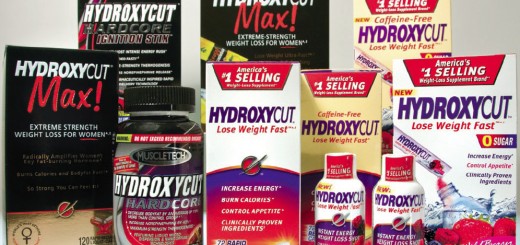 Dairy products are controversial these days.
Dairy products are controversial these days.
They are cherished by the health organizations as an essential food for bone health.
But other experts disagree and think that dairy is harmful and should be avoided.
Of course, not all dairy products are the same.
They vary greatly, depending on how the cows were raised and how the dairy was processed.
Also, as it is with most things in nutrition, the ultimate health effects depend on the individual.
Is it “Natural” to Eat Dairy?
One common argument against dairy products is that it is “unnatural” to consume them.
This makes sense… humans are the only species that consumes milk in adulthood and certainly the only species that consumes the milk from another animal.
Of course, the biological purpose of cow’s milk is to feed a rapidly growing calf. Humans aren’t calves… and adults usually don’t need to grow.
Before the agricultural revolution, humans only drank mother’s milk as infants. They didn’t consume dairy as adults… one of the reasons dairy is excluded on a strict paleo diet (1).
Therefore, it doesn’t make sense from an evolutionary perspective that dairy is “needed” for optimal health.
That being said, people in some areas of the world have been eating dairy for thousands of years and there are many studies that document how the genes have changed to accommodate dairy products in the diet (2).
The fact that some of us are genetically adapted to eating dairy is a pretty convincing argument for it being “natural” for us to consume it.
Bottom Line: Humans are the only species that consumes milk in adulthood, as well as the milk from another animal. Dairy was not consumed until after the agricultural revolution.
About 3/4 of The World is Intolerant to Lactose
The main carbohydrate in dairy is lactose, a “milk sugar” that is made of the two simple sugars glucose and galactose.
When we’re infants, our bodies produce a digestive enzyme called lactase, which breaks down lactose from mother’s milk. But many people lose the ability to do that in adulthood (3).
In fact, about 75% of the world’s population is unable to break down lactose as adults, a phenomenon called lactose intolerance (4).
This photo shows how common lactose intolerance is in different parts of the world:
As you can see from the photo, lactose intolerance is rare in North America, Europe and Australia, but very common in Africa, Asia and South America.
People who are lactose intolerant have digestive symptoms when they consume dairy products. This includes nausea, vomiting, diarrhea and related symptoms.
However, keep in mind that lactose intolerant people can sometimes consume fermented dairy (like yogurt) or high-fat dairy products like butter (5).
Some people can also be allergic to other components in milk, like the proteins. This is fairly common in children, but rare in adults.
Bottom Line: About 3/4 of the world is intolerant to lactose, the main carbohydrate in dairy products. Most people who are of a North European ancestry can digest lactose without problems.
Dairy Can be Quite Nutritious

Dairy products are very nutritious.
The milk contains all the proteins, fatty acids and micronutrients needed to nurture a growing calf.
Given that human muscles, cells and organs are similar to a calf’s, it makes sense that dairy products are also a good source of nutrients for humans.
A single cup (244 grams) of milk contains (6):
- Calcium: 276mg (28% of the RDA).
- Vitamin D: 24% of the RDA.
- Riboflavin (B2): 26% of the RDA.
- Vitamin B12: 18% of the RDA.
- Potassium: 10% of the RDA.
- Phosphorus: 22% of the RDA.
- It also contains decent amounts of Vitamin A, Vitamins B1 and B6, Selenium, Zinc and Magnesium.
This is coming with 146 calories, 8 grams of fat, 8 grams of high quality animal protein and 13 grams of carbs.
Calorie for calorie, whole milk is actually quite nutritious. It contains a little bit of almost everything we need.
Of course… there are many different types of dairy. Fatty dairy products like cheese and butter have a nutrient composition that is quite different from milk.
The nutrient composition also varies depending on what the cows ate and how they were raised, especially when it comes to the fatty components.
The composition of dairy fat is actually very complex, it consists of hundreds of different fatty acids. Many of the fatty acids are bioactive and can have powerful effects on health (7).
Cows that are raised on pasture and fed grass have more Omega-3 fatty acids and up to 500% more Conjugated Linoleic Acid (8, 9).
Grass-fed dairy is also much higher in fat soluble vitamins, especially Vitamin K2, a nutrient that is incredibly important for regulating calcium metabolism and has major benefits for both bone and heart health (10, 11, 12, 13).
Keep in mind that these healthy fats and fat-soluble vitamins are not present in low-fat or skim dairy products, which are often loaded with sugar to make up for the lack of flavor caused by removing the fat.
Bottom Line: Milk is quite nutritious, but the nutrient composition varies between the different types of dairy. Dairy from grass-fed or pasture raised cows contains more fat soluble vitamins and beneficial fatty acids.
Dairy is a Superfood For Your Bones
Calcium is the main mineral in bones and dairy is the best source of calcium in the diet.

Therefore, it only seems logical that dairy has benefits for bone health.
In fact, most mainstream health organizations recommend that people consume 2-3 servings of dairy per day, in order to get enough calcium for the bones (14, 15).
But many experts don’t think this is a good idea because countries where dairy consumption is low often have low rates of osteoporosis, while countries that consume lots of dairy (like the U.S.) often have high rates of osteoporosis.
However… this does NOT mean that dairy causes osteoporosis… there are many other differences between these countries.
Actually, dairy is one of the things that mainstream nutrition gets right.
The great majority of evidence shows that dairy improves bone density, reduces osteoporosis and lowers the risk of fractures in the elderly (16, 17, 18, 19, 20, 21).
Also, let’s not forget that dairy contains more than just calcium. It also provides many other nutrients that are highly beneficial for bone health, including protein, phosphorus and (in the case of grass-fed, full-fat dairy) Vitamin K2.
Bottom Line: Numerous studies show that dairy products have clear benefits for bone health. They improve bone density in the young and lower the risk of fractures in the elderly.
Full-Fat Dairy is Associated With a Lower Risk of Obesity and Type 2 Diabetes

Full-fat dairy has some benefits for metabolic health.
Despite being high in calories, consumption of full-fat dairy is actually linked to a reduced risk of obesity.
In a review that looked at 16 studies, 11 of them showed that full-fat dairy was associated with reduced obesity, but none of them found such an effect for low-fat dairy (22).
There is also some evidence that dairy fat can reduce the risk of diabetes.
One observational study from Harvard researchers looked at the amount of trans-palmitoleic acid (a dairy fat) people had floating around in their bloodstream.
In this study, those who consumed the most full-fat dairy had less belly fat, less inflammation, lower triglycerides, improved insulin sensitivity and a 62% lower risk of type 2 diabetes (23).
Several other studies show that full-fat dairy is associated with a reduced risk of diabetes, but a number of studies show no association (24, 25, 26).
Bottom Line: Several studies show that full-fat dairy products are linked to a reduced risk of obesity and type 2 diabetes, but other studies find no effect.
Dairy May Protect Against Heart Disease… But it Depends on The Type

Conventional wisdom dictates that dairy should raise the risk of heart disease because it is high in saturated fat.
However, the saturated fat myth has been debunked in recent years.
There really is no link between saturated fat consumption and heart disease… at least not for the majority of people (27, 28).
It also seems that the effects of dairy on heart disease risk varies between countries, probably depending on how the cows are raised and fed.
The Nurses Health Study, a major epidemiological study in the U.S., found that dairy fat was linked to an increased risk of heart disease (29,30).
However, many other studies show that full-fat dairy has a protective effect, on both heart disease and stroke.
One review of 10 studies, most of which were using full-fat dairy, showed that milk was linked to reduced risk of stroke and cardiac events. There was also a trend towards a reduced risk of heart disease, but it wasn’t statistically significant (31).
In countries where cows are largely grass-fed, full-fat dairy is associated with major reductions in the risk of heart disease and stroke (32, 33).
For example, one study in Australia (where cows are mostly grass-fed) showed that those who consumed the most full-fat dairy had a whopping 69% lower risk of heart disease (34).
This is probably related to the high vitamin K2 content of grass-fed dairy products, but there are also studies showing that dairy can improve other risk factors… such as blood pressure and inflammation (35, 36, 37, 38).
Bottom Line: Studies on dairy and heart disease have led to conflicting results. In countries where cows eat mostly grass, full-fat dairy products are associated with major reductions in heart disease risk.
Dairy, IGF-1, Acne and Prostate Cancer

Dairy is known to stimulate the release of insulin and IGF-1 (Insulin-like Growth Factor 1).
This may be the reason that dairy consumption is linked to increased acne (39, 40).
But these hormones are also believed to increase the risk of certain cancers (41).
Of course, there are many different types of cancer and the relationship between dairy and cancer is quite complex (42).
Some studies suggest that dairy is linked to a reduced risk of colorectal cancer, but an increased risk of prostate cancer (43, 44).
The association with prostate cancer is actually pretty weak and inconsistent. Some studies show up to a 34% increased risk, but other studies find no effect (45, 46).
Keep in mind that increased insulin and IGF-1 aren’t all bad. If you’re trying to gain muscle and strength, then these hormones can provide clear benefits (47).
Bottom Line: Dairy can stimulate the release of insulin and IGF-1, leading to increased acne and a higher risk of prostate cancer in some studies. However, dairy seems to be protective against colorectal cancer.
The Best Types of Dairy
The best dairy products are full-fat, from cows that are grass-fed and/or raised on pasture.

They have a much better nutrient profile, including more of beneficial fatty acids and more fat soluble vitamins, particularly vitamin K2.
Fermented dairy products like yogurt and kefir may be even better. They contain probiotic bacteria that can have numerous health benefits (48).
A lot of people also swear by raw dairy products. That is, dairy from milk that hasn’t been pasteurized… a process that may have some adverse effects on the taste and nutrient composition of the milk (49).
It seems clear that consuming raw milk isn’t nearly as risky as some people make it out to be.
Many people also claim that they don’t tolerate conventional dairy from cows, but get excellent results with dairy from goats.
Take Home Message
When it comes to dairy, there are no good answers that apply across the board. The health effects seem to vary greatly between individuals.
Some people tolerate dairy just fine, others have mysterious symptoms when they consume it and yet others can’t tolerate conventional dairy but feel awesome withraw dairy products.
I personally tolerate dairy and eat a lot of organic, grass-fed yogurt. I frequently use butter with my meals and also eat cheese occasionally. I don’t drink milk… but only because I’ve never really gotten into the habit of it.
If you tolerate dairy products and enjoy them, then by all means eat dairy. There certainly is no compelling evidence that people should avoid it and quite a bit of evidence of benefits.
Just make sure to choose quality dairy… preferably grass-fed/pasture-raised and full-fat.
Low-fat dairy (which is often loaded with sugar) seems to be a bad choice overall… the main metabolic benefits of dairy are due to the fatty components.
Original Article by: Kris Gunnars at AuthorityNutrition






